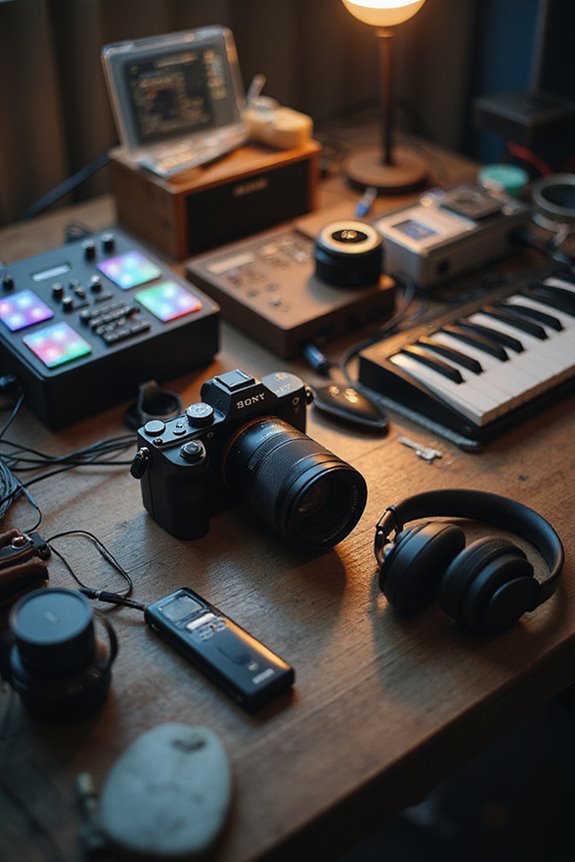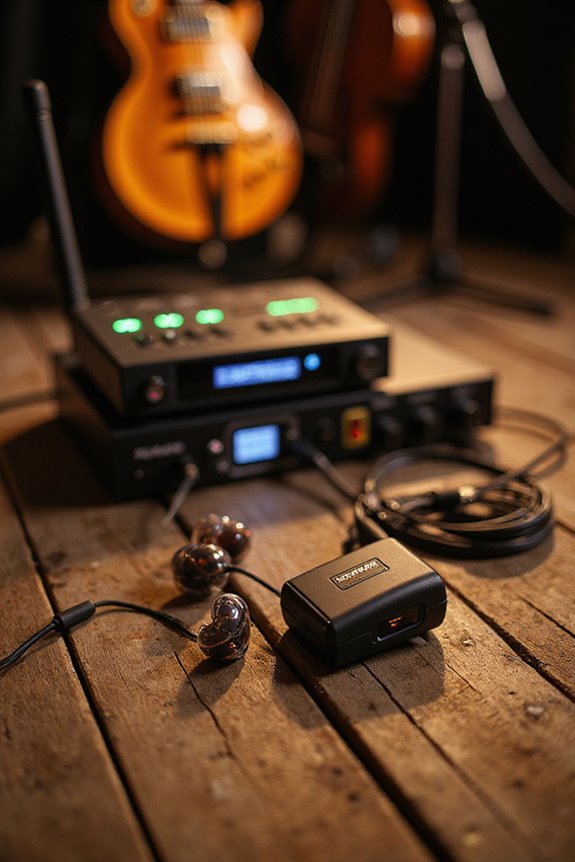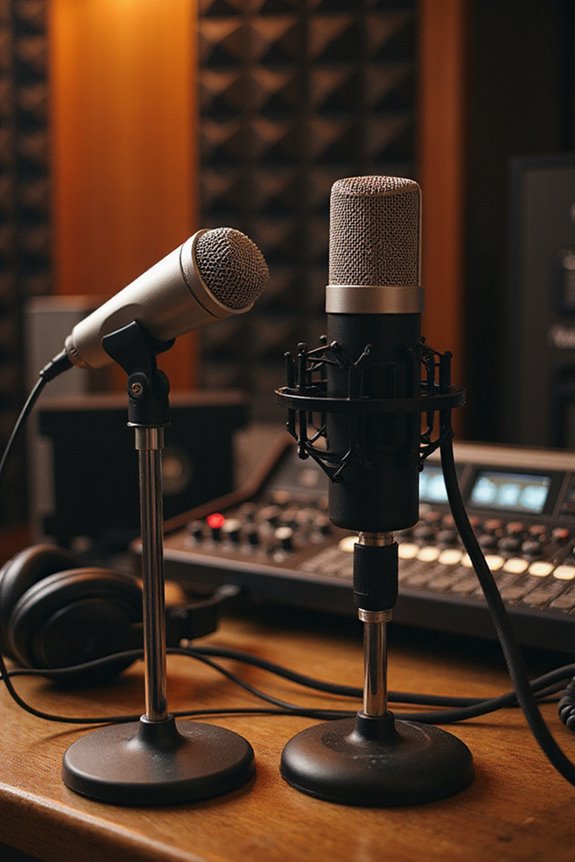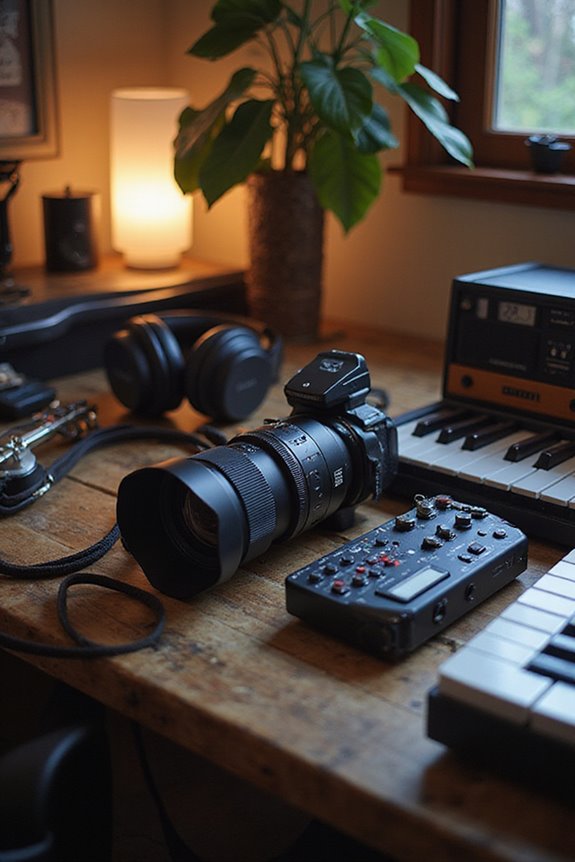When selecting a professional streaming microphone, we should consider types, polar patterns, and key features. USB microphones, like the Blue Yeti Nano, are perfect for beginners, while XLR mics offer superior quality for advanced users. Cardioid patterns are ideal for solo streamers to minimize background noise. Key specs include frequency response and low self-noise ratings. Budget-friendly options, such as the Rode PodMic, deliver impressive audio. Let’s explore how to assess our streaming environment for best setup.
Key Takeaways
- Consider your connection type: USB mics are user-friendly, while XLR mics offer superior audio quality but require extra gear.
- Choose the right polar pattern: Cardioid mics are great for solo streamers, minimizing background noise effectively.
- Ensure good audio quality: Look for mics with a flat frequency response and low self-noise ratings for clear sound reproduction.
- Evaluate your streaming environment: Identify any background noise and optimize microphone placement with sound-absorbing materials for better audio.
- Don’t forget essential accessories: Use stands, shock mounts, and pop filters to enhance audio clarity and minimize handling noise.
Understanding Microphone Types and Connections
When it comes to connections, USB microphones provide easy plug-and-play functionality, making them great for beginners. However, XLR microphones require additional gear, like an audio interface, but offer superior audio quality and flexibility. We should also consider diaphragm sizes: large-diaphragm mics deliver warmth, while small-diaphragm mics capture nuanced details. Ultimately, the right choice depends on our specific streaming needs. Additionally, it’s important to evaluate the audio quality of the microphone system to ensure clear and detail-rich sound for professional applications.
Importance of Polar Patterns for Streamers
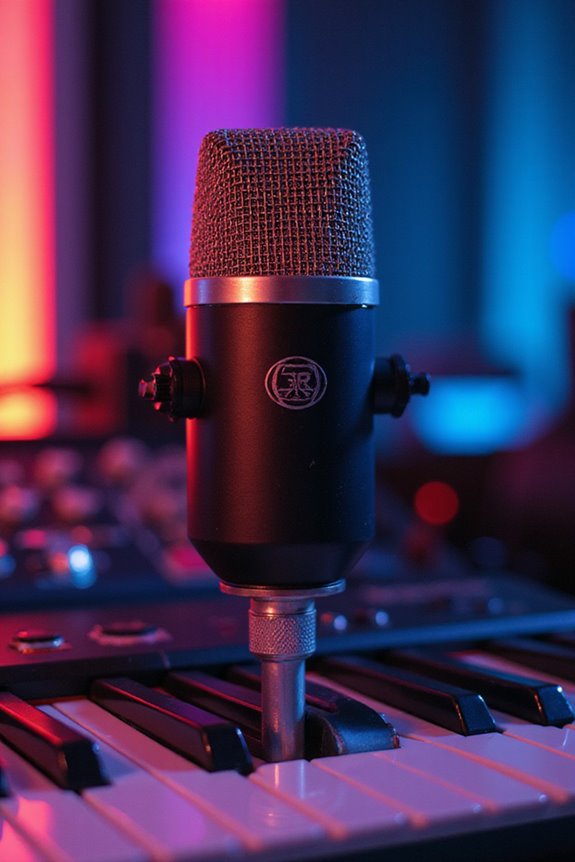
Choosing the right polar pattern is just as important as selecting the right microphone type and connection. Polar pattern types define a microphone’s directional sensitivity, influencing how well it captures sound while minimizing background noise. For solo streamers, a cardioid pattern is often ideal, capturing voice clearly from the front while reducing ambient sounds. In noisier environments, we might prefer supercardioid or hypercardioid patterns that provide narrower pickup angles, enhancing voice clarity. Conversely, omnidirectional patterns work best for group settings but require a quiet backdrop to avoid unwanted noise. Understanding these options lets us optimize sound capture and guarantee our broadcasts stand out with professional-quality audio. Additionally, microphones with multiple polar patterns offer versatility, allowing for adjustments based on recording conditions. So, let’s select wisely for our streaming success!
Key Features for Enhancing Audio Quality
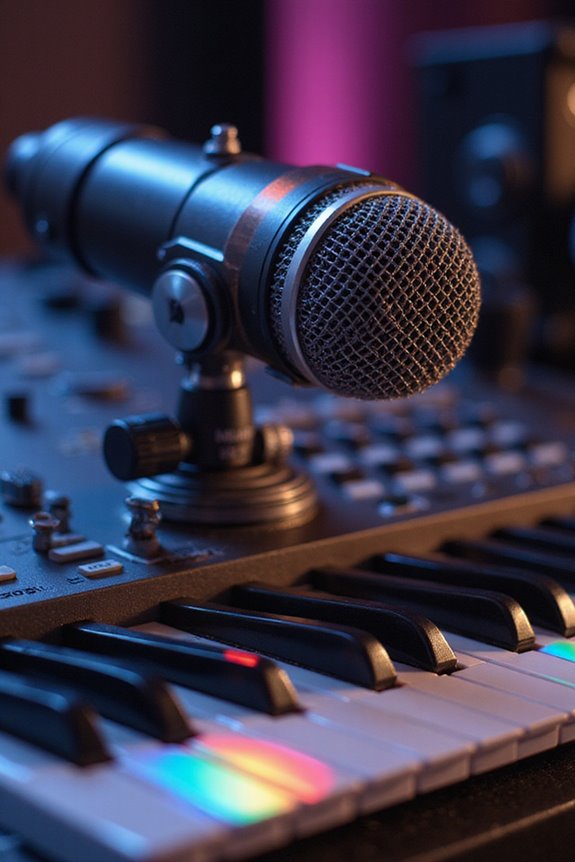
Elevating audio quality is essential for streamers who want to engage their audience effectively. One key feature to take into account is frequency response; a flat response guarantees our voice is accurately reproduced. When we choose microphones with a presence boost around 3-6 kHz, clarity in our speech improves considerably.
Additionally, low self-noise ratings below 16 dBA help reduce unwanted background hiss.
For effective noise handling, microphones equipped with selective pickup patterns can minimize ambient noise impact, while built-in noise gates stabilize voice levels. Furthermore, considering USB audio interfaces can significantly enhance the overall audio quality of your streaming setup.
With these features, we can achieve professional sound, engage our viewers, and enhance overall streaming quality—assuring they listen without distraction and fully enjoy our content.
Budget-Friendly Options for Aspiring Streamers
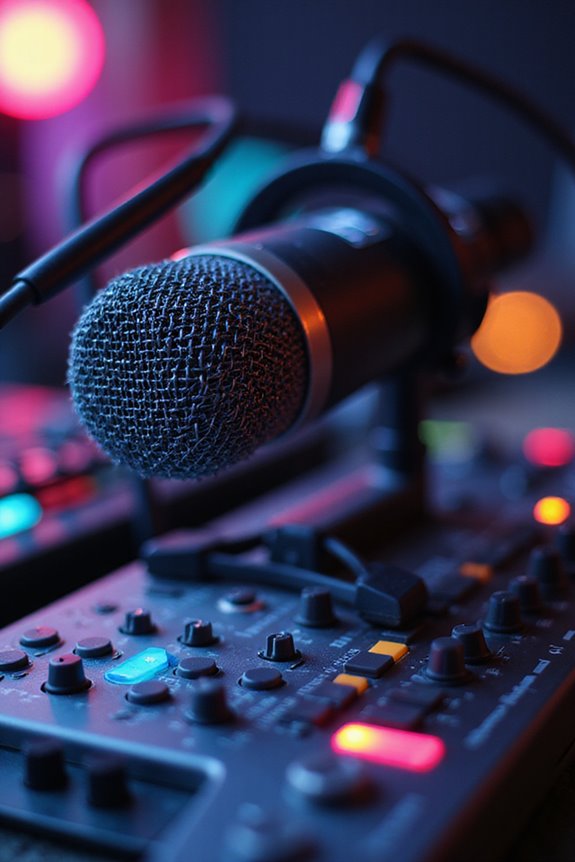
As aspiring streamers, we all want high-quality audio without breaking the bank. Let’s explore some budget microphone recommendations that deliver great performance. The Blue Yeti Nano is highly popular, offering sound quality typically found in higher-end mics while remaining affordable. The Fifine K688 consistently earns positive user review insights for its impressive clarity, making it a standout pick. For those seeking something ultra-budget-friendly, the Zalman ZM-Mic1 provides decent audio quality in a clip-on design, great for hands-free use. If you need a robust option, consider the Rode PodMic, known for its broadcast-quality sound at a reasonable price. All these models represent excellent value and guarantee you sound professional on your streams.
Assessing Your Streaming Environment
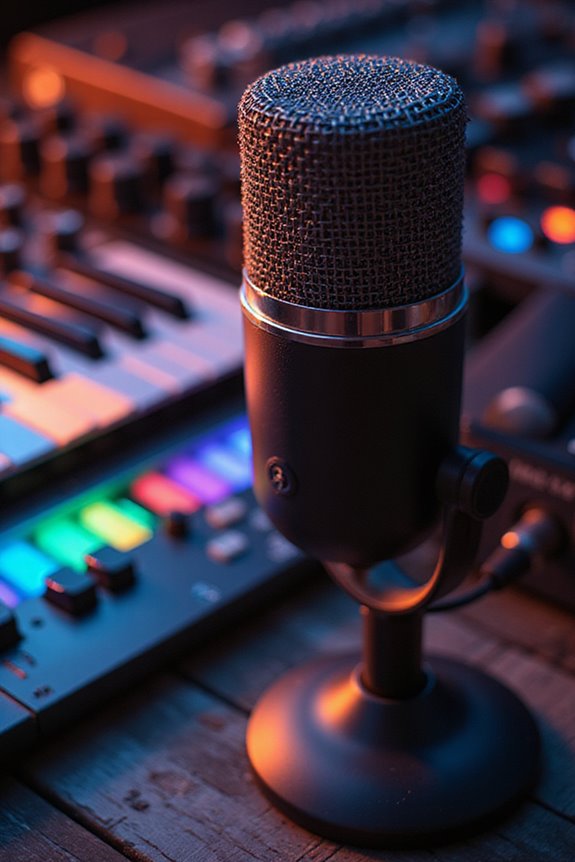
How can we create the perfect audio backdrop for our streams? First, let’s consider our room dimensions—this helps us understand how sound waves behave. Measuring ceiling height and space allows us to optimize microphone placement. Next, we need a noise assessment. Are there fans or HVAC systems creating background noise? Identifying these distractions, along with reflective surfaces like hardwood floors, is key. Using sound-absorbing materials, like carpets and curtains, can greatly improve audio quality. We should also check for obstructions near our microphone position, as keyboards and PC towers can generate unwanted noise. By understanding our streaming environment, we position ourselves for crisp, clear audio that engages our audience effectively. Additionally, ensuring that we use a wireless microphone system can enhance our mobility and sound quality during streams.
Essential Accessories and Considerations for Setup
Establishing a great audio environment is only part of our streaming journey; the right accessories can make a significant difference too. Utilizing mic isolation techniques is essential, and investing in a tripod stand or microphone arm can help reduce handling noise by isolating our mic from vibrations.
A spider shock mount effectively absorbs vibrations, enhancing voice clarity. Don’t forget about pop filters, which eliminate harsh popping sounds without degrading our audio quality. We also need to pay attention to accessory compatibility; ensuring our gear works seamlessly together is imperative for a stable setup. Additionally, selecting a boom arm with integrated cable management will help maintain a tidy workspace and improve overall setup aesthetics.
With well-chosen accessories, we can achieve a professional sound while maintaining the flexibility to adapt to different streaming environments and styles.
Frequently Asked Questions
Can I Use a Gaming Headset Instead of a Microphone?
Sure, we can use a gaming headset instead of a microphone! It’s convenient and portable, offering decent audio quality. But if we aim for a professional sound, we might want a dedicated mic for better fidelity.
How Do I Properly Mic Myself for Streaming?
To properly mic ourselves for streaming, we should focus on microphone positioning, placing it about 6-12 inches away. Incorporating soundproofing techniques further enhances audio quality, ensuring our message is clear and professional.
What Is the Best Microphone for Voiceover Work?
Finding the best microphone for voiceover work is like choosing the perfect instrument for an orchestra. We should focus on essential microphone features and voiceover techniques to guarantee our sound captures every nuance beautifully.
Do Microphones Work With All Streaming Platforms?
Absolutely, most microphones work with various streaming platforms, ensuring good microphone compatibility. By selecting the right mic, we can enhance our streaming quality, making our audio clear and engaging for our audience.
How Often Should I Clean My Microphone?
We should clean our microphones regularly to maintain ideal sound quality. As a guideline, we recommend cleaning every month, following proper microphone maintenance tips and cleaning frequency recommendations to guarantee longevity and superior performance.

